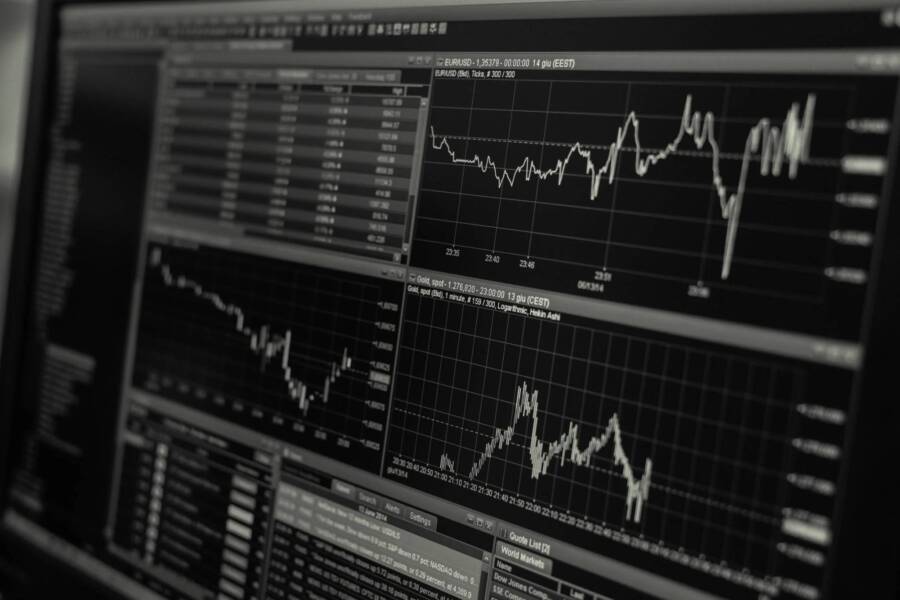Trading is a business, first and foremost. A trader is employed to make money for the firm by taking positions on financial instruments. You can measure the success or failure of any trading decision in terms of how much profit it generates relative to the amount of risk incurred.
Data-driven methods can help traders to reduce risk, increase returns, or both. These methods are not just useful for the statistical arbitrage desk. They can also be applied by traders in other areas who want to improve their results using quantitative techniques. Here are several data-driven methods that you can use to improve trading decisions.
Volatility Surfaces
Volatility surface mapping is a technique that can be used to identify the most appropriate strategy for a particular market. Volatility surfaces demonstrate how the implied volatilities of options on an underlying change as the expiration month approaches and as the strike price gets closer to at-the-money. It’s like mapping out the contours of a terrain, where different types of options strategies are like valleys, plateaus and mountains.
By analyzing the volatility surface for a market, traders can identify the type of strategy that will be most effective in managing their risks and generating returns. For example, if a trader is considering buying options as one part of their trading strategy, they need to understand how this trade relates to other strategies such as purchasing a straddle or being short a put spread. Here is a supplemental reading on another type of trading strategy, “learn how to swing trade“, after going through this article, dig in and broaden your knowledge of the business.
Regression and Moving Averages
The use of linear regression in trading is well known. It’s a statistical method for finding the “line of best fit” to represent historical price behavior. Linear regression can also be used in its non-parametric form, which does not assume that data comes from an underlying distribution.
The purpose of using linear regression in trading is to determine the relationship between a variable of interest and some other related variables. For example, a moving average filter can be used to analyze a time series of returns for a particular asset class or individual stock. The purpose of this analysis would be to determine whether there is any price momentum.
Machine Learning
Another technique that is becoming increasingly important in trading is machine learning. Machine learning methods are not just useful for hedge funds that place billion-dollar bets on the direction of interest rates. They can also be used by proprietary traders who need to identify price anomalies and order flow imbalances because these factors often lead to large profit opportunities.
Machine learning uses training data to discover patterns. Once a model has been established, the trader can use the computer to identify new patterns in real-time. For example, a machine learning model could be used to discover a systematic way to trade options on an underlying asset.
Computer Simulations
Computer simulations are also frequently used to generate trading ideas. For example, some traders may want to see how their program would perform in different market regimes or under various economic scenarios. This type of analysis typically requires the trader to upload historical data into a back-testing platform to control variables such as volatilities and correlations between instruments.
It’s essential to understand that the results generated by computer simulations are only as reliable as the assumptions that go into them, so it’s essential to build quality controls wherever possible. Computer modeling should be used for its strengths, looking at various trading strategies and comparing their performance under different scenarios.
Bollinger Bands
Another technique that is widely used in the options markets is Bollinger Bands. These volatility bands plotted two standard deviations on either side of an underlying asset’s moving average. The Bollinger Band Width varies over time, and this helps identify regimes when an option trade would be most appropriate. For example, if the Bollinger Bands narrow, this may indicate an overbought market.
Traders must understand these sorts of regimes because options tend to be more expensive when S&P 500 futures are overbought. Of course, the whole point of using Bollinger Bands is that they identify periods when trading conditions are ideal and keep a trader from taking an unnecessary risk when it would be appropriate to sit on their hands and do nothing.
Final Thoughts
Data-driven methods can help traders make better decisions and improve their returns. The techniques discussed here, such as regression and machine learning, are unsuitable for all trading strategies. However, you can certainly use them to supplement a portfolio and increase profits.
As long as there is a market, traders will always want to be a part of it. And as long as traders are looking for new ways to succeed, there will be people who devise new systems and strategies that help them do just that.
TechnologyHQ is a platform about business insights, tech, 4IR, digital transformation, AI, Blockchain, Cybersecurity, and social media for businesses.
We manage social media groups with more than 200,000 members with almost 100% engagement.
